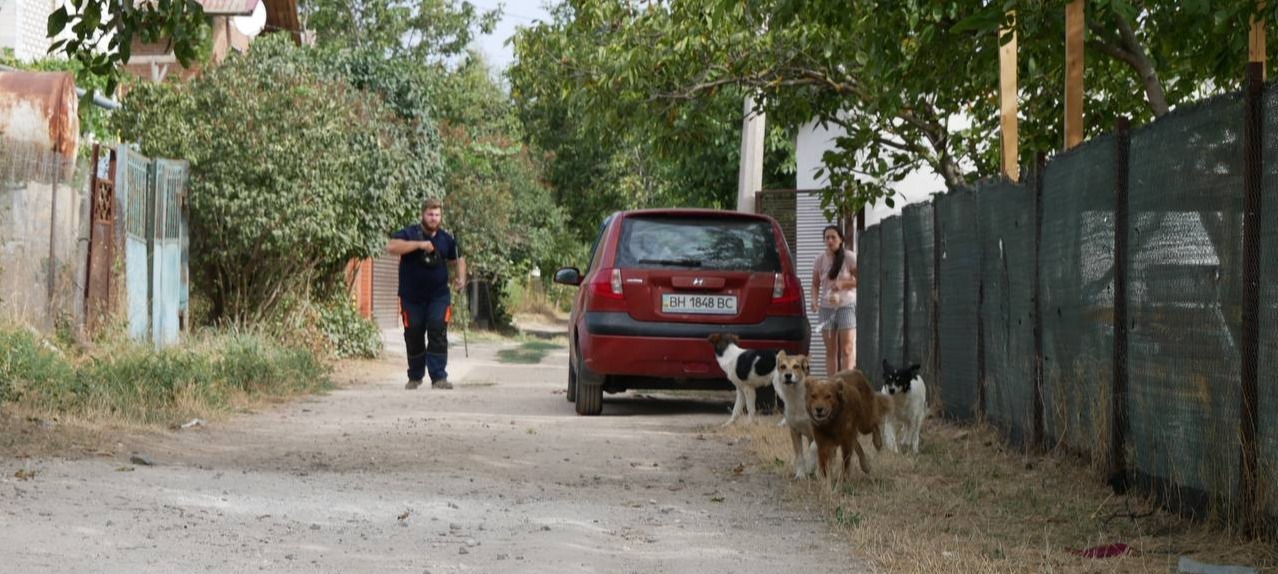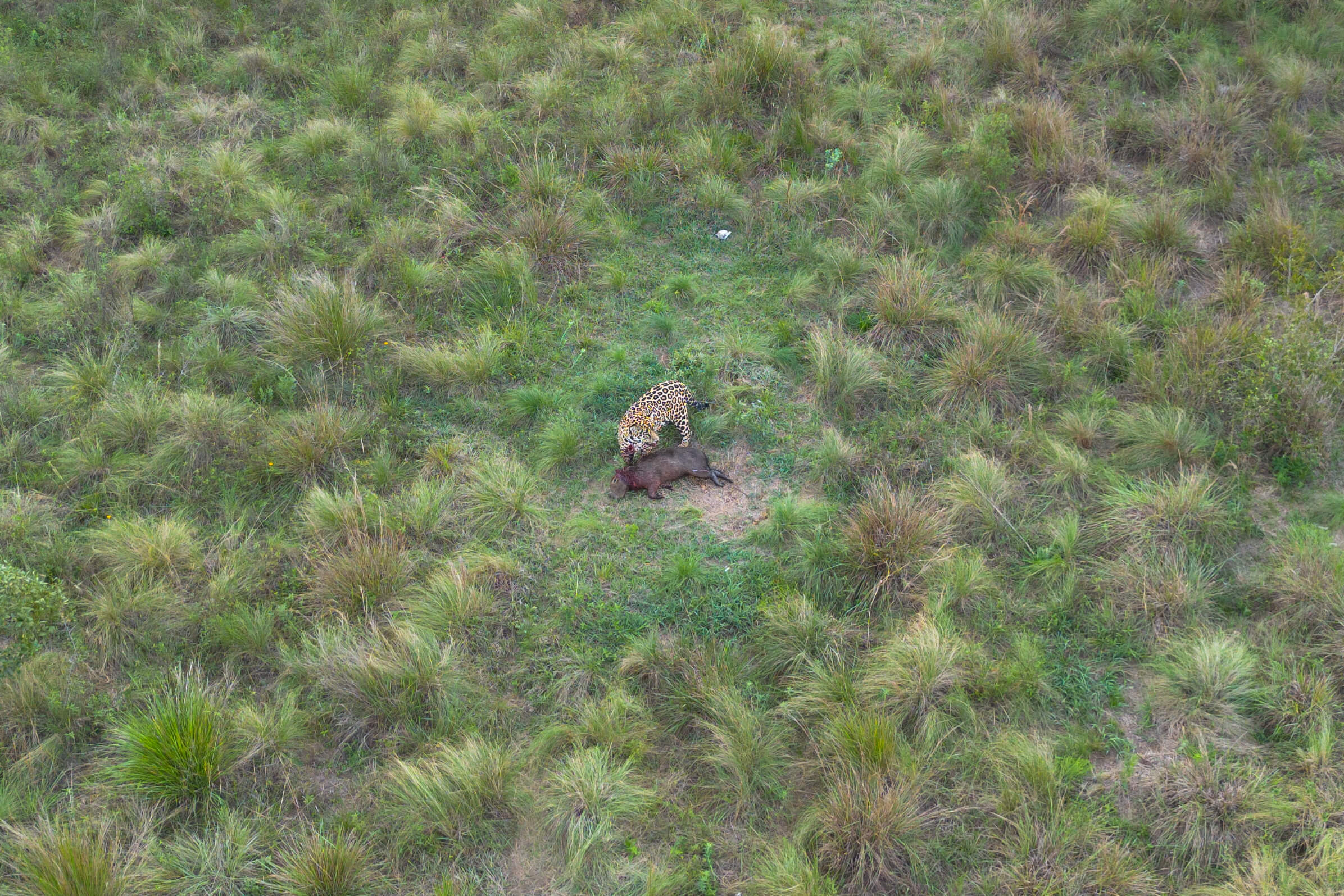How do muskoxen move during the dark winter months in Arctic Northeast Greenland, and what factors determine whether the population thrives?
These are some of the questions that a team of researchers working out of the Zackenberg research station has been trying to answer since 2013. But since the area is only accessible for around 5-6 months a year, it is not possible to observe the animals in winter. Therefore, they need to be captured and fitted with transmitters.
Equipment from DANiNJECT plays an important role when the team immobilizes the animals.
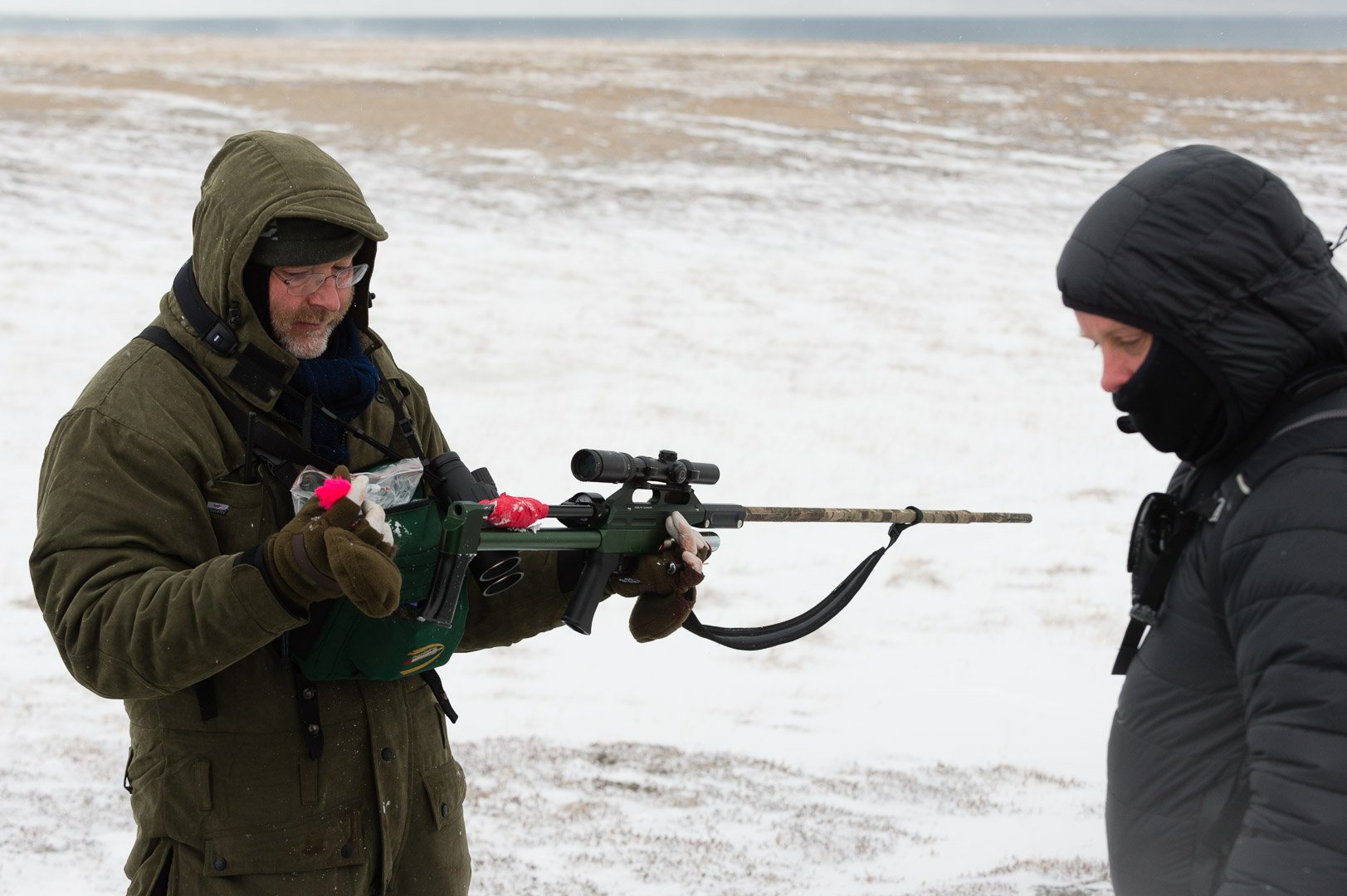
A reliable rifle is key
Professor Niels Martin Schmidt from Aarhus University explains the process of capturing the animals:
"When we find a group of muskoxen, we round them up by acting like wolves. With 6-8 people, we form a big circle around them, which we slowly close - the same way a pack of wolves would. The muskoxen respond naturally to this by grouping together. Then we can herd them to a small hilltop, where they stand still long enough for one of the vets to put a tranquilizer dart in them," says Niels Martin Schmidt.
The immobilization of the muskoxen is carried out by experienced veterinarians from Copenhagen Zoo. They use a DANiNJECT JMSP11 25 bar CO2 projector, a take-down model with a custom-made precision barrel for long-range shooting. The darts are 3 ml darts with an integrated Recco reflector chip, making it possible to find the darts again in the terrain using a receiver.
"It is crucial that we have a reliable rifle. We must be able to shoot over long distances and it has to be a CO2 dart projector so we don't scare the animals. Often there are very low temperatures and pretty strong wind conditions to contend with, so it's important that we have some reliable equipment," explains Niels Martin Schmidt.
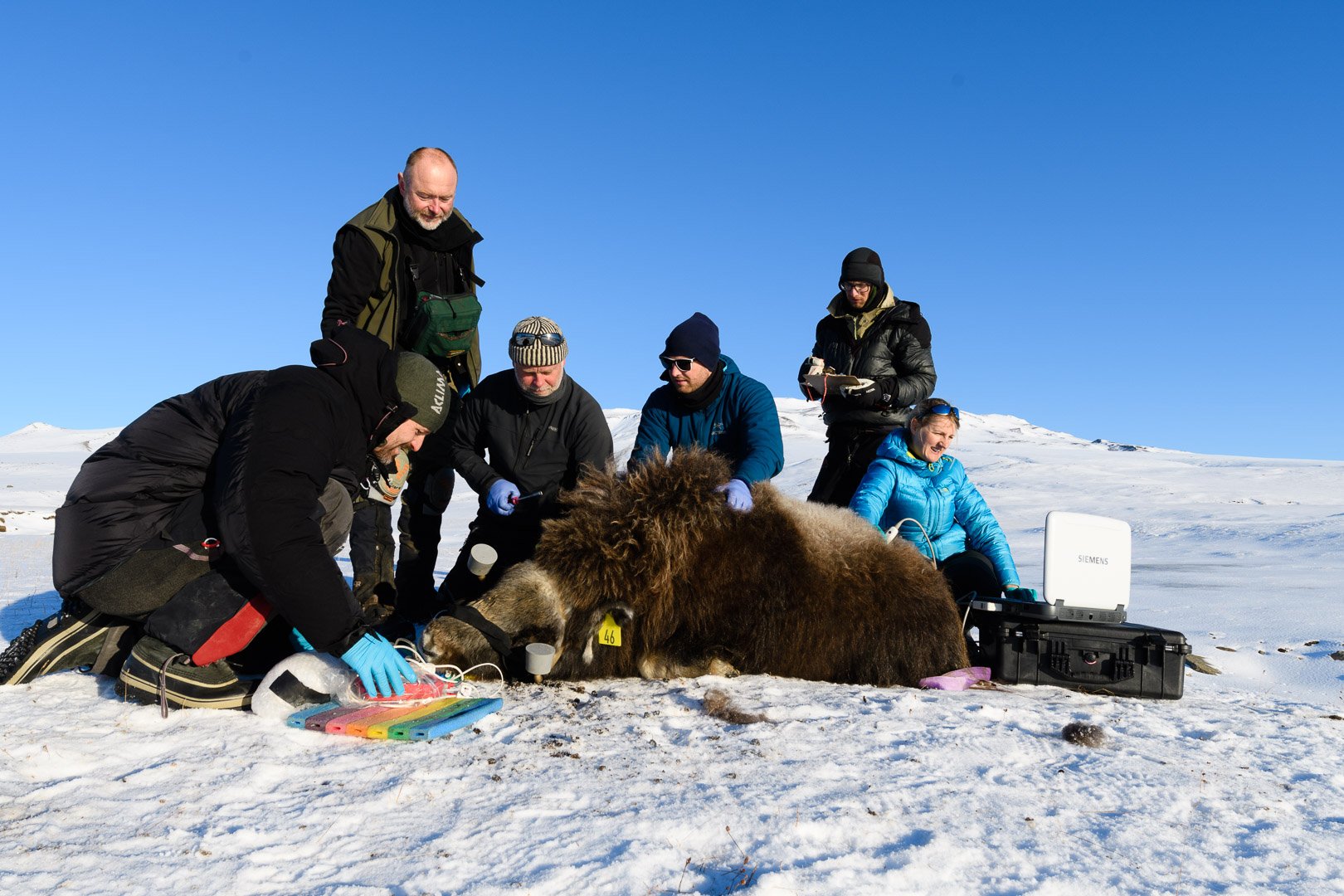
Monitoring the energy balance
Once a muskox is immobilized, the research team has about an hour to fit it with a collar with tracking and motion sensors. The muskox will also have a sensor placed in its belly so the researchers can monitor its temperature and heart rate.
Throughout the procedure, the muskox is closely monitored. During the research project, 65 animals have been captured and fitted with tracking devices, and no animals suffered harm.
The research team uses data from the collar and the various sensors to map the animals' movements and - particularly important - their energy balance. The data can provide answers to when they eat and consume energy, how much energy they spent and on what, and what their energy balance means for the development of the population.
"Energy balance is absolutely crucial, we see. If it has been a very harsh winter, the animals have had to use all their energy to survive on their own and will end up aborting, so there will be almost no calves the following spring. If they have had more energy in surplus, it can be almost every second cow that has a calf," Niels Martin Schmidt explains.
Re-collecting collars with reflectors
The tracking collars record such large amounts of data that it cannot be transmitted, but must be stored on the device itself. That's why it's crucial to get the collars re-collected. The collars are programmed to drop off after about 2.5 years, and although they can be located via the GPS signal, they can be very difficult to find if they are buried under deep snow.
Niels Martin Schmidt contacted Steffen Stræde, owner of DANiNJECT and former CEO of Copenhagen Zoo, and they came up with the idea to fit the tracking collars with Recco reflectors like the darts, making it possible to locate them with great accuracy, even in very deep snow.
This ensures the research team access to this valuable data, which will contribute to a better understanding of the magnificent muskoxen of remote Greenland.
Photo credit: Lars Holst Hansen

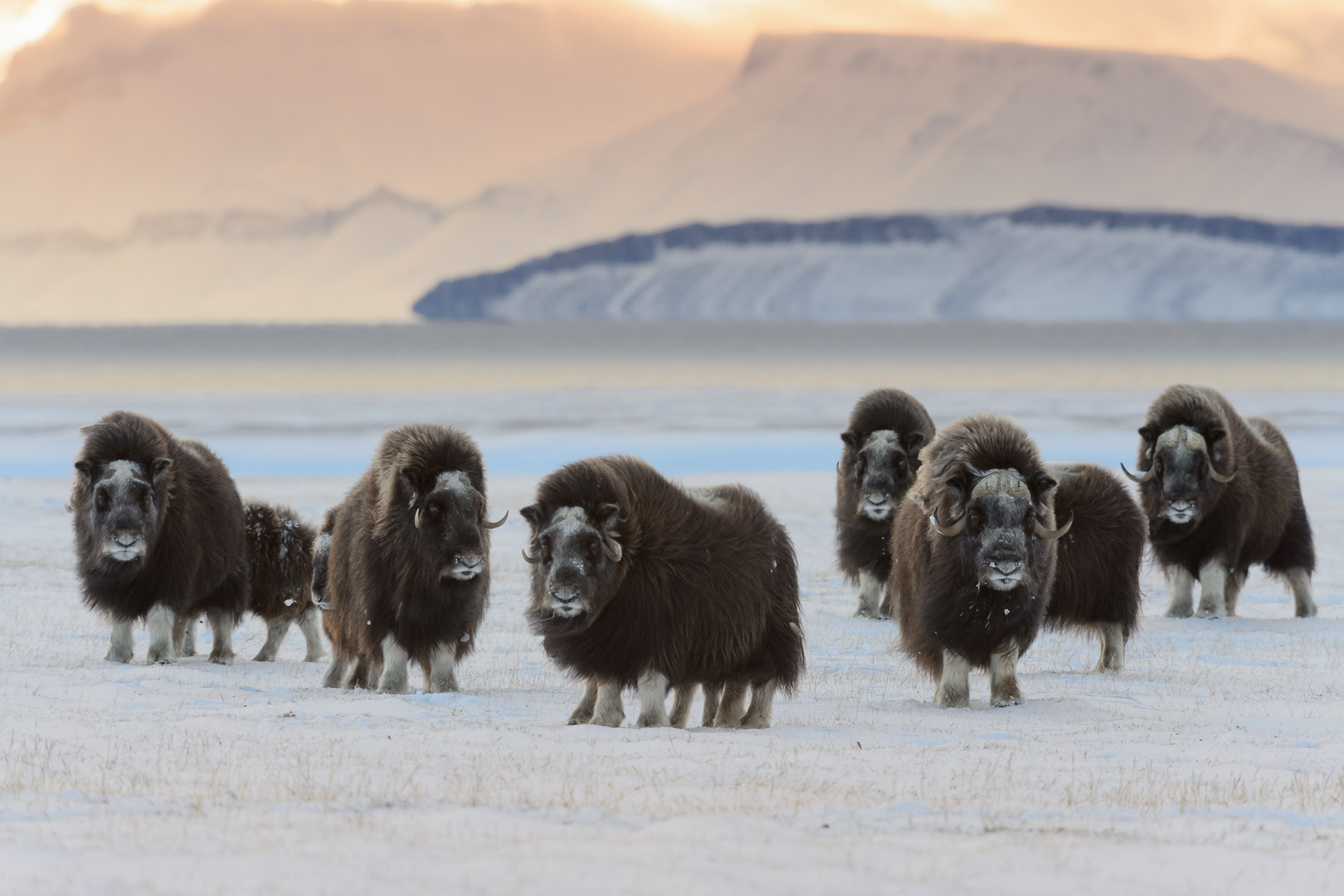
.jpg)
